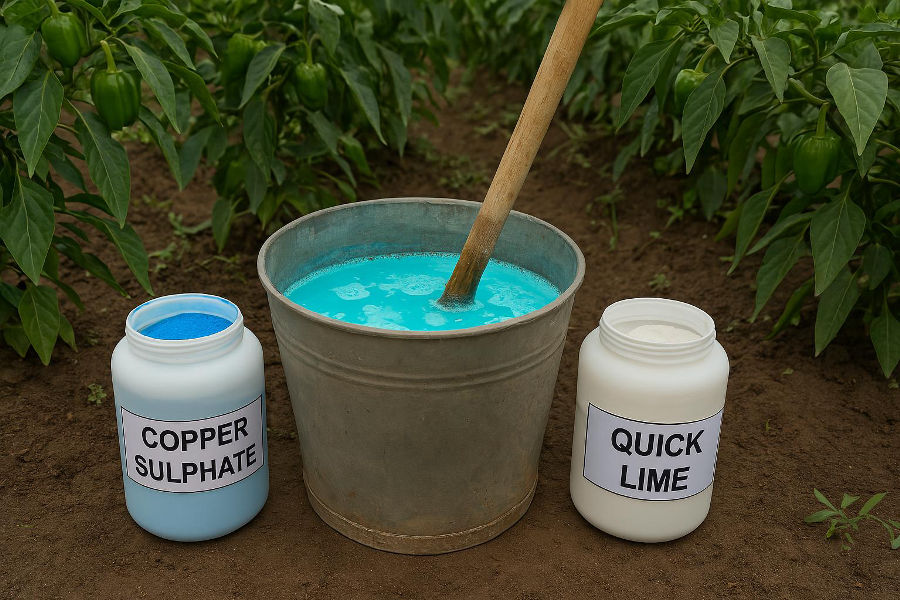Bordeaux Mixture: A Trusted Fungicide in Indian Agriculture
What is Bordeaux Mixture?
Bordeaux mixture is a traditional and widely used fungicide in agriculture. It is made by combining copper sulfate and lime (calcium hydroxide) with water. This mixture is especially effective in controlling fungal and bacterial diseases in various crops such as fruits, vegetables, and plantation crops.
Originally developed in France, Bordeaux mixture has stood the test of time and continues to be a reliable solution for disease management, particularly in organic farming systems.
Ingredients and Standard Ratio
To prepare Bordeaux mixture, the standard ratio used is 1:1:100. This means:
-
1 kilogram of copper sulfate
-
1 kilogram of quick lime
-
100 liters of clean water
This ratio provides effective disease control while ensuring plant safety when applied correctly.
How to Prepare Bordeaux Mixture
-
First, dissolve copper sulfate in 50 liters of water using a plastic bucket.
-
Separately, dissolve quick lime in another 50 liters of water.
-
Slowly pour the lime solution into the copper sulfate solution while stirring continuously.
-
Use the prepared mixture immediately or within 24 hours.
It is important to always mix the lime solution into the copper solution, not the other way around, to prevent chemical reactions that can damage plants.
Benefits of Bordeaux Mixture
Bordeaux mixture is used to prevent a wide range of diseases such as downy mildew, early and late blight, leaf spots, anthracnose, and bacterial blights. It is especially useful during the monsoon season when fungal infections are more likely to spread.
This mixture is accepted in organic farming because it is made from naturally occurring substances and has minimal impact on the environment when used properly. It is cost-effective and easy to prepare, making it accessible for small and large-scale farmers alike.
Suitable Crops
Bordeaux mixture is commonly used in crops like grapes, banana, mango, tomato, potato, brinjal, and pomegranate. It helps in managing fungal infections and bacterial diseases in these crops, thus ensuring better plant health and yield.
Application Guidelines
-
Spray in the early morning or late afternoon to avoid plant stress or sunburn.
-
Do not apply during flowering or when temperatures are very high.
-
Always use plastic or wooden containers for preparation; avoid metal.
-
Clean the sprayer thoroughly after use to prevent corrosion.
